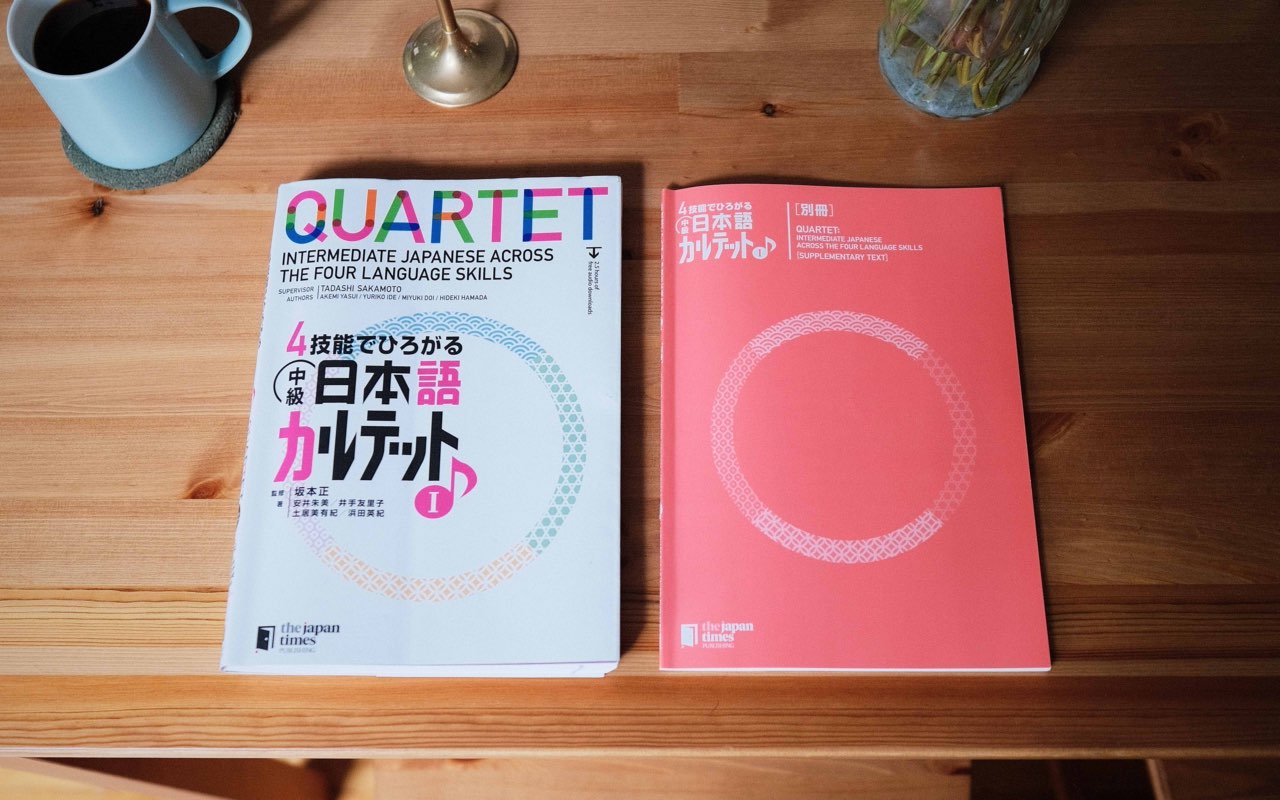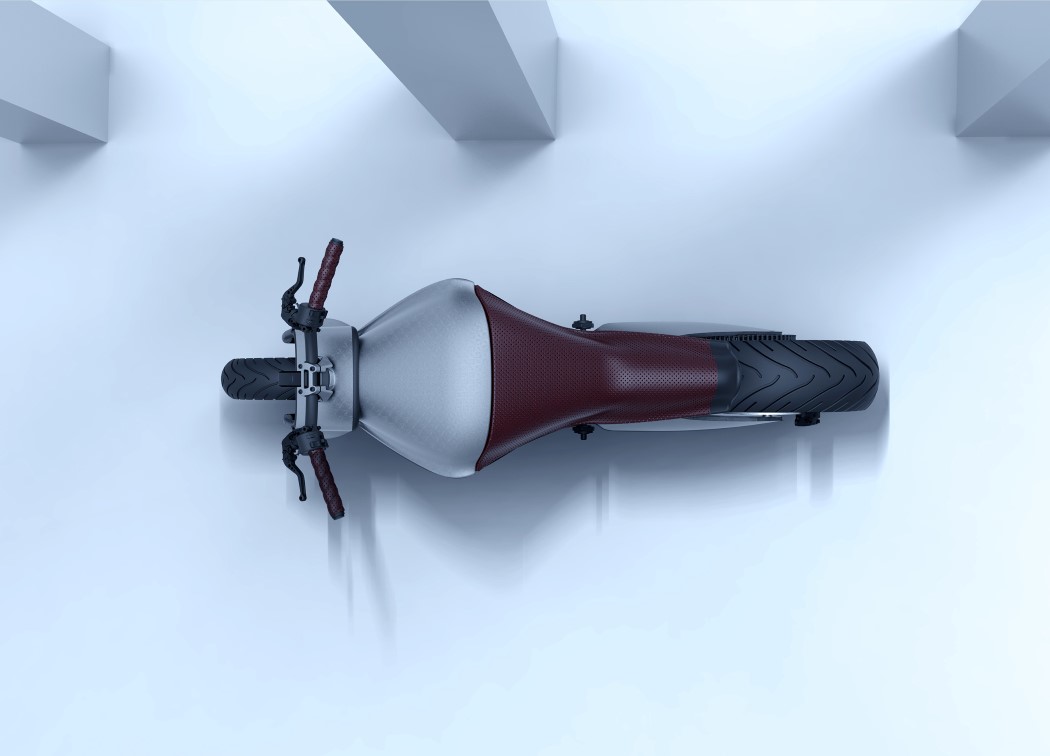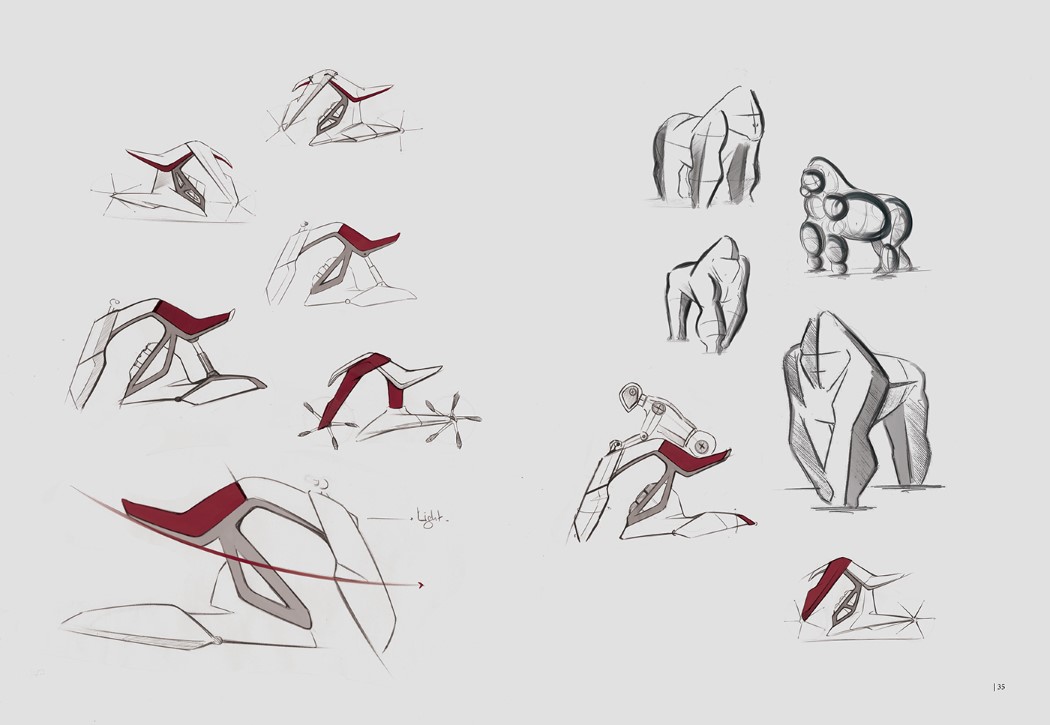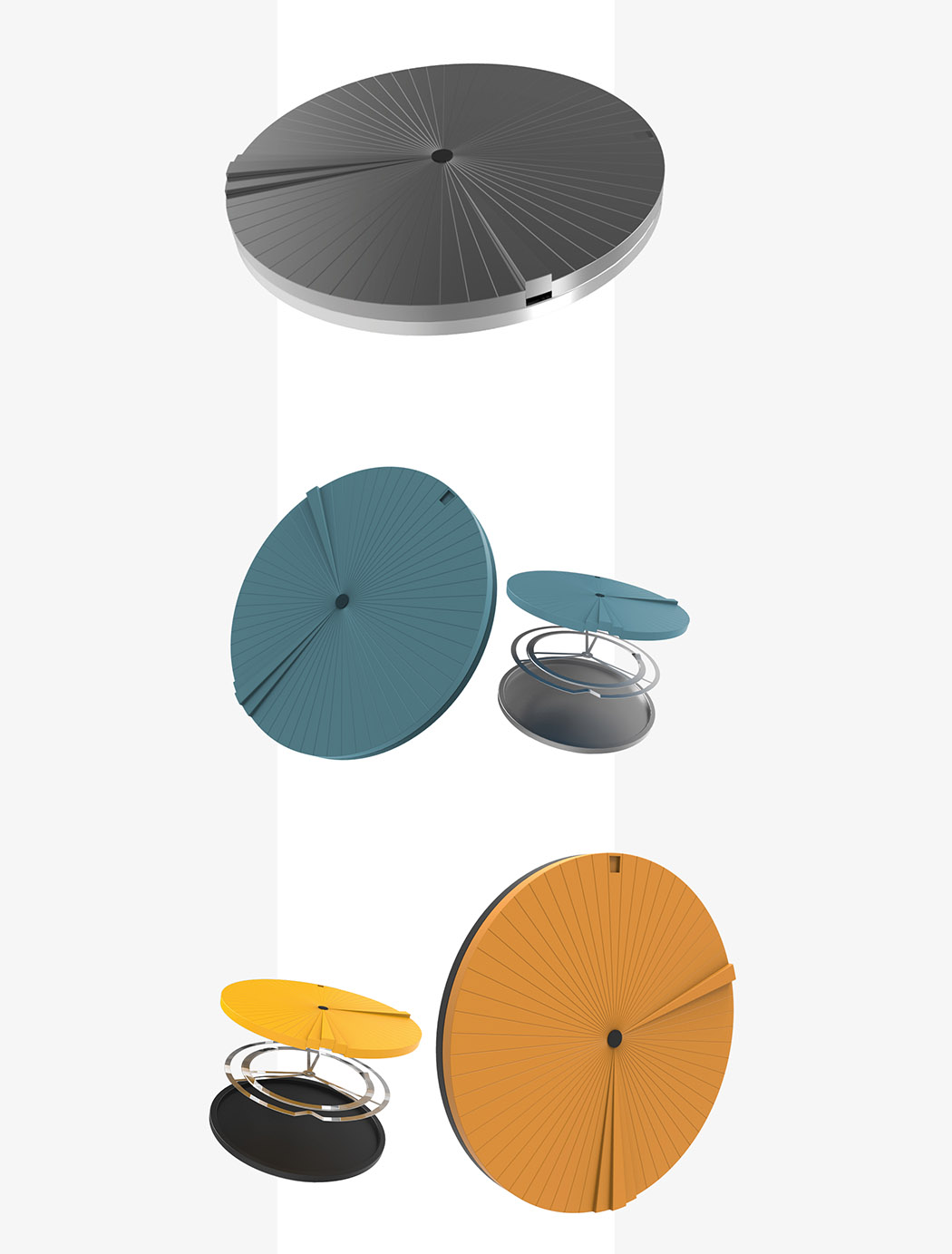
Click here to go see the bonus panel!
Hovertext:
I hope this doesn't cost half my audience. In fact, I'd like to double-you.
Today's News:

Hovertext:
I hope this doesn't cost half my audience. In fact, I'd like to double-you.
 Nowadays, there are a ton of resources available to learn Japanese, most of which are geared toward the beginner level — providing a platform for new learners to get their feet wet before they move on to more complex material. The most well-known of...
Nowadays, there are a ton of resources available to learn Japanese, most of which are geared toward the beginner level — providing a platform for new learners to get their feet wet before they move on to more complex material. The most well-known of...
|
Word of the day
for October 15 |
|
| antidictionary n | |
|
|
| ← yesterday | About Word of the Day • Nominate a word • Leave feedback | tomorrow → | |
| Part of speech: | expression |
|---|---|
| Example sentence: | 이제 가봐야겠어요. 곧 또 만나요! |
| Sentence meaning: | I've got to go now, see you soon! |

Guest blog written by 2017 Environmental Visual Communication student Cristina Bergman
Every year, 10,000 tonnes of plastic enters the Great Lakes. Imagine 55 jumbo jets of plastic crash landing in the lakes each year. In this province alone, 3 billion plastic bottles are sold annually, but only half are recycled. The other 1.5 billion bottles end up in landfills or littering the environment. As the only province that borders the Great Lakes, Ontario has an obligation to protect this vast, irreplaceable resource. But is the province stepping up?
In 1981, Ontario’s Blue Box program debuted in Kitchener, ON. It was the world’s first curbside recycling program and a blueprint for recycling programs in more than 150 countries around the world. The Blue Box program provides service to more than 13 million Ontarians and over 97% of households.There is no doubt that this program has diverted millions of tonnes of waste, but two issues are clear. First, 1.5 billion plastic bottles end up in landfills or littering the environment each year—not into a blue bin or another recycling program. Second, Ontario has had the lowest overall recycling rates in the country since 2004.

A container deposit system is one which the consumer pays a deposit on the bottle or packaging upon purchase (usually between 5-20 cents). When the bottle is returned to a designated location, the consumer is refunded the deposit. Ontarians are familiar with this system as a result of the ‘Bag it Back’ initiative for alcohol containers introduced in 2007.
An international study conducted by PricewaterhouseCoopers AG WPG concluded curbside collection and recycling systems achieve lower recycling rates than deposit systems. According to this study, the collection rates (return rates) of beverage containers collected through deposit systems are over 80% on average and, in some countries, higher than 95%.
In Canada, deposit return systems and recycling rates are also aligned. Where deposit systems exist across the country, recycling rates average more than 80%. As you can see on the graph below, Ontario and Manitoba are the only provinces without deposit return systems for non-alcoholic beverage containers, and they have the lowest overall recycling rates in the country. As a result, a growing number of voices are urging Ontario’s provincial government to introduce a container deposit system for single-use plastic bottles.

Currently, the management and funding of Ontario’s Blue Box program is shared evenly between municipalities and the producers of the packaging materials that end up in curbside Blue Boxes (or the “stewards”). Meaning, 50% of the funding comes from industry, while the other 50% comes from the taxpayer.
Recently, industry has been encouraged by the Minister of Environment and Climate Change, Hon. Chris Ballard, to improve recycling rates in the province of Ontario. On August 14, 2017, he issued a letter directing Stewardship Ontario and the Resource Productivity and Recovery Authority to prepare an amended Blue Box program plan by February 15, 2018. This amended Plan will result in individual producer responsibility, meaning the stewards will be 100% financially responsible for Ontario’s Blue Box program. By taking full financial responsibility for their products, the province hopes to encourage producers to further consider the end-life of their packaging.
The power has been placed in the hands of industry to determine what this new Blue Box program will look like and whether or not a plastic bottle deposit system is in the cards for the province of Ontario. Every single day they delay, another 4 million bottles are ending up in landfills and littering the environment in this province alone. These are valuable resources that can be converted in to other products such as park benches or public garbage bins that are treated as trash. But is industry up to the task? And why do they need a “push”?

Environmental Defence is one of the organizations advocating for a plastic bottle deposit system in the province. In an interview with their water campaign manager, Ashley Wallis, explains the complications they have faced getting big bottle companies on board.
Environmental Defence focuses on issues of protecting freshwater resources. Ashley Wallis states "a plastic bottle deposit system is a tangible solution for improving Ontario’s recycling rates and reducing plastic pollution…With a plastic bottle deposit system, Environmental Defence hopes that the revenue generated by the unredeemed deposits (i.e. the deposits from bottles that weren’t returned for refund) will go to a provincial environmental fund that will support initiatives that will improve the health of the Great Lakes.”
If Ontario had a 10-cent deposit on plastic bottles and achieved an 80 per cent recycling rate, over $100 million a year in unredeemed deposits could be generated and spent cleaning up the lakes.
In May, Ashley wrote an op-ed for the Hamilton Spectator offering a deposit system as a potential solution to increase funding for the lakes. Jim Goetz, president of the Canadian Beverage Association (CBA), wrote a letter to the editor in response. According to Ashley, the letter “was full of misleading industry talking points and inaccurate arguments. She has since released a series of blogs ‘debunking’ the beverage industry’s claims.
In June, Environmental Defence reached out to the largest bottlers in Ontario, Canada Dry Mott’s, Cott Beverages Canada, Red Bull, Nestlé, Coca-Cola and PepsiCo, to invite them to the table to discuss supporting a plastic bottle deposit system. In response, they received a letter from their trade association, the CBA, stating they do not believe a plastic bottle deposit system is the right solution. They believe “a more practical option is to build on the success of the Blue Box program in Ontario, which beverage companies are helping to do right now.”

I contacted three of the top bottlers, Nestlé, Coca-Cola and Pepsi to ask what their perspective is on a plastic bottle deposit system. I received a response from Nestlé and Coca-Cola stating my question has been forwarded to their trade association (the CBA), but received no response from Pepsi.
I then contacted the CBA and spoke with their senior director of communications, Jeff Rutledge. Jeff stated: “The CBA and our members are committed to our responsibility under the Waste-Free Ontario Act and are focused on increasing the recovery rate of beverage containers while supporting efforts to increase overall waste diversion rates in Ontario and across Canada…In the province of Manitoba, the CBA has improved recovery rates of materials by 28% in just six years by providing away-from-home and multi-residential recycling infrastructure.” They did not comment on whether or not they support a deposit system, or what they are doing to improve recycling in the province of Ontario.
While a 28% increase in recovery rates in Manitoba over six years is a significant accomplishment, Manitoba had very few public garbage bins and no multi-residential recycling (i.e. no recycling in apartments and condos). These initiatives have improved ‘recovery rates’, but Manitoba’s 'recycling rates' still remain the second lowest in the country at 55%. ‘Recovery rates’ are simply the amount of waste that has been collected. A significant amount of this waste still ends up being diverted to landfill due to food and other contaminants. ‘Recycling rates’ include items that have been collected and will be repurposed and/or converted into other products.
Unlike Manitoba, Ontario already has well-established multi-residential and away-from-home recycling initiatives, yet still has the lowest recycling rates in the country. The CBA is committed to improving the Blue Box program, but are not supportive of a plastic bottle deposit system. However, single-use plastic bottles are generally designed to be consumed on the go and are largely disposed of in public waste bins not curbside recycling programs. The province needs another tangible solution to stop the 1.5 billion bottles annually from ending up in our landfills, littering the environment or making their way into our lakes.

The ball has now been placed in the court of industry to come up with a solution by February 15, 2018. Unfortunately, they do not currently support a plastic bottle deposit system, which is the most effective system for achieving high recycling rates and increasing the after-life of materials. If this is a system Ontarians would like to see in the future, pressure needs to be put on industry in the coming weeks as they generate the revised Blue Box plan. If their customers openly support a plastic bottle deposit system, these organizations will too and we can take the steps necessary to preserving our lakes for generations to come.
It’s the season of New Year’s resolutions, and for 2018 Ontario’s resolution needs to be about stopping the more than 4 million plastic bottles a day from ending up in landfills and littering our environment. By giving this ‘garbage’ value, we can decrease the detrimental impact it is having on our ecosystems.
| Part of speech: | verb |
|---|---|
| Example sentence: | Läkaren gav henne råd om hur hon skulle ta hand om sin bebis. |
| Sentence meaning: | The doctor advised her how to take care of her baby. |

Ok, saying it’s “moist like a French vagina” is sexist and uncalled for. Rather, it’s moist like any nationality of vaginal or penile secretion. The crust is all crusty and flaky and nice whereas the filling is liquid. How liquid depends on how much agar agar you add. I’m keeping it very liquid, like those fast-food apple pies that burn your tongue.
The dough

The filing


The assembly and baking


|
Word of the day for June 22
|
|
| smorgasbord n | |
|
|
| ← yesterday | About Word of the Day • Archive • Nominate a word • Leave feedback | tomorrow → | |

 Photo by Betty Chan[/caption]
She’s a very hip thirtysomething small business owner, mom, yoga teacher and part-time voice of the universe all rolled into one. I’d like to share one bit of her wisdom with you today: Always give 80%.
If you are like me, that will sound absolutely insane.
I was raised in the era of “go strong or go home.” I can’t even tell you how many times I attempted to give 110% only to fail because, let’s face it, that is not mathematically possible.
Photo by Betty Chan[/caption]
She’s a very hip thirtysomething small business owner, mom, yoga teacher and part-time voice of the universe all rolled into one. I’d like to share one bit of her wisdom with you today: Always give 80%.
If you are like me, that will sound absolutely insane.
I was raised in the era of “go strong or go home.” I can’t even tell you how many times I attempted to give 110% only to fail because, let’s face it, that is not mathematically possible.
The post The Rule of 80%: How to Curb Your Expectations and Reach Sustainable Success appeared first on Fluent in 3 months - Language Hacking and Travel Tips.
Comme Pokémon GO se joue toujours partout dans le monde, Sarah Elliott, notre productrice de contenu éducatif, a pensé à vous donner plus de détails sur les PokéStops situés un peu partout au Musée. Certains joueurs ont pu constater que le GPS du jeu n’est pas aussi précis qu’ils auraient aimé. Voici donc une liste de PokéStops en lien avec le ROM et un peu plus de renseignements à leur sujet.
Le gym du ROM se trouve au sommet du Cristal Michael Lee-Chin. L’architecte Daniel Libeskind a fait un croquis de cette structure massive en aluminium et en verre sur des serviettes en papier alors qu’il assistait à un mariage familial au Musée. Il aura fallu des années, 3500 tonnes d’acier, 38 tonnes de boulons et 9000 mètres cubes de béton pour ériger le Cristal, dont la construction a été terminée en 2007. À l’intérieur, vous y trouverez des dinosaures, des œuvres d’art et des objets venant d’Afrique, des Amériques et de l’Asie-Pacifique, ainsi que des expositions phares telles que Chihuly.
Ce dinosaure devrait être facile à trouver; il s’agit du plus gros dinosaure exposé au Canada! Appelé Futalognkosaurus dukei, il mesurait plus de 33 mètres de longueur et pesait autant que 10 éléphants. Les fossiles de ce dinosaure ont été découverts en Argentine. Le dinosaure du Musée est une réplique, un moulage du dinosaure original. Des spécialistes du moulage ont mesuré les fossiles originaux et ont ensuite créé le squelette en fibre de verre et en plastique qui orne le Musée.


Les lions gardiens chinois ont souvent changé de place en dépit de leur poids énorme. Chaque lion pèse 17 tonnes! Ils ont été sculptés à l’origine en Chine, au 17e siècle, et servaient de protecteurs et de défenseurs d’un domaine royal avant de veiller sur notre Galerie de la Chine en 1923. Par la suite, ils ont élu domicile dans un jardin extérieur, dans une galerie, dans un nouveau jardin extérieur et finalement, toujours à l’extérieur, mais là où ils se trouvent présentement depuis 2003, lorsque la construction du Cristal a commencé. Pouvez-vous différencier les lions? Le mâle pose sa patte sur une boule décorée, tandis que la femelle joue avec son petit qui mordille ses griffes.


Lucius Verus a régné sur Rome de l’an 161 jusqu’à sa mort en 169 de notre ère, mais pas seul. L’empereur Antonin le Pieux l’a choisi comme héritier et son frère adoptif Marc Aurèle l’a nommé coempereur. Lucius a d’ailleurs marié la fille de Marc Aurèle. Des bustes comme celui-ci auraient embelli les places publiques pour que la population puisse reconnaître l’empereur et se rende compte de son allure imposante. Lucius Verus se considérait lui-même comme le plus bel empereur de tous. Il ajoutait même de la poudre d’or à ses cheveux et à sa barbe! Pouvez-vous voir qu’un trépan a été utilisé pour sculpter sa chevelure si réaliste?


Thoutmosis III, le neveu de la reine et pharaonne Hatchepsout, a gouverné l’Égypte de 1479 à 1425 avant notre ère. Il est connu pour ses campagnes militaires qui ont étendu l’empire égyptien jusqu’en Asie et en Afrique. Selon une légende, il aurait conquis la ville de Joppé en prétendant se rendre et en offrant des paniers et des sacs de denrées alimentaires à la ville en guise de tribut. Les citoyens ne se doutaient absolument pas que ce « cadeau » renfermait des soldats égyptiens prêts à bondir et à prendre la ville!


Voici une réplique d’une célèbre statue grecque en bronze réalisée il y a environ
2 400 ans. Nous savons maintenant qu’il s’agit d’Aphrodite, la déesse de l’amour et de la beauté, même si la statue n’a plus de tête. Elle porte un vêtement grec appelé chiton, qui s’attache sur une épaule, et des sandales aux pieds. Pouvez-vous voir le himation, un manteau court et épais drapé sur son dos? De sa main droite, elle le tire pour cacher ses cheveux. Sa main gauche (manquante) devait tenir une pomme selon un mythe populaire grec.


L’aile de la famille Weston tire son nom de la famille Galen Weston (propriétaire de Loblaws) en guise de remerciement pour l’aide apportée à l’agrandissement et aux rénovations du Musée. Dans l’aile de la famille Weston, laissez-vous inspirer par l’art et l’architecture européens, explorez les galeries réunissant des roches, minéraux, météorites et pierres précieuses, et découvrez comment les gens vivaient au début du Canada. Cette aile abrite également le Studio ROMjeunes et les nombreux programmes pour la famille, ainsi que l’Entrée des groupes scolaires Le Choix du Président, où l'équipe de l'éducation du ROM accueille les groupes scolaires.


De 1968 à 1995, le dôme en béton de cet édifice abritait le « Théâtre des étoiles » où les visiteurs pouvaient assister à des représentations sur les étoiles et les planètes qui nous entourent. Dans les années 1980, les visiteurs du soir pouvaient danser tout en profitant d’un spectacle avec jeu de laser sous le dôme. Même si le planétarium appartient maintenant à l’Université de Toronto, le Musée continue d’amener les visiteurs dans l’espace lors de ses programmes scolaires, son planétarium gonflable et ses vitrines de météorites dans les Galeries Teck.


Étienne MuraseIt's gonna get a little weird, gonna get a little wild, I ain't from 'round here; I'm...
What can I say about the InstruMMents’ dimensioning pen that you haven’t heard before? The pen’s revolutionary design took over the internet, spawning thousands of videos and millions of likes across social media.
The InstruMMents pen uses the right kind of technology to upgrade an age old user experience. The pen replaces the trusty-old yet potentially-frustrating measuring tape, presenting itself as a vastly smaller, and infinitely more powerful alternative. Using a magnetic roller and a guiding light, the dimensioning pen can measure everything from straight lines, to curves and even corners. It doesn’t have an end, like a tape, so you can go on and on for meters (feet, if you don’t like the metric system!). The pen is accurate to the nearest 0.1mm, and syncs with your phone to display and even record measurements. The pen comes with a sensor that allows you to capture contours of the things you measure, so it doesn’t act as just a scale, it acts as a contour gauge too.
Aside from the pretty amazing measuring tech, the pen lives up to its name by actually fulfilling its duties as a writing instrument. It comes with pen/pencil/stylus attachments that you can easily flip between, based on your need. These attachments plug right into the InstruMMents’ measuring module, and if you don’t want either of them, you can even choose the necklace attachment that allows you to have the dimensioning module hanging off your neck, ready to seamlessly gauge, calculate, calibrate and quantify any type of distance… in a way that’ll make all your designer/architect friends supremely jealous!
Designer: Minkyu Choi for InstruMMents
BUY IT HERE: $164.99 $198.00
Étienne MuraseUgh!
Étienne MuraseGuns out for Hara...

You’ve seen a lot of vehicles inspired by cheetahs, jaguars, leopards, even the stallion. However, the Yamaha Nazo chooses to look at the gorilla instead. The Nazo’s frame does great justice to the gorilla’s form, with the frontal leaning posture and the heavy forearm inspired front fork.
Plus, the silver and brown combo work brilliantly well, matching the hide of the silver-backed gorilla. Loving this!
Designer: Omar Alfarra Zendah






Étienne MuraseI think a lot of it is fear mongering! magafeed.com/fearmongering-vs-reality/
 Torna a tremare la terra in centro Italia. Tre forti scosse. Il sisma è stato localizzato a 4 chilometri da L’Aquila, 38 da Teramo, 50 da Terni, 64 da Foligno, 73 da Montesilvano, 77 da Chieti, 79 da Pescara, 95 da Perugia, 96 da Viterbo, 97 da Roma. I comuni più vicini all’epicentro sono Montereale (AQ), Capitignano (AQ), Campotosto (AQ) e Amatrice (RI). La zona del terremoto è “purtroppo nota, è un valore che può creare qualche problema alle infrastrutture già compromesse, anche se non ci attendiamo molti crolli. In quelle zone sta nevicando da diverse ore, la situazione è complicata”. Così il capo della Protezione civile, Fabrizio Curcio. Successivamente sono state avvertite altre due forti scosse, rispettivamente di magnitudo 5.4 e 5.3. A Roma chiusa la metropolitana per verifiche tecniche.
Torna a tremare la terra in centro Italia. Tre forti scosse. Il sisma è stato localizzato a 4 chilometri da L’Aquila, 38 da Teramo, 50 da Terni, 64 da Foligno, 73 da Montesilvano, 77 da Chieti, 79 da Pescara, 95 da Perugia, 96 da Viterbo, 97 da Roma. I comuni più vicini all’epicentro sono Montereale (AQ), Capitignano (AQ), Campotosto (AQ) e Amatrice (RI). La zona del terremoto è “purtroppo nota, è un valore che può creare qualche problema alle infrastrutture già compromesse, anche se non ci attendiamo molti crolli. In quelle zone sta nevicando da diverse ore, la situazione è complicata”. Così il capo della Protezione civile, Fabrizio Curcio. Successivamente sono state avvertite altre due forti scosse, rispettivamente di magnitudo 5.4 e 5.3. A Roma chiusa la metropolitana per verifiche tecniche.
La prima, di magnitudo 5.3 è stata registrata alle 10.25 a 111 km dalla Capitale. L’epicentro si trova a tre chilometri da Montereale, nella zona dell’Aquila, a 4 km da Capitignano e a 9 km da Campotosto e Amatrice nel reatino. La seconda scossa è stata invece avvertita verso le 11.15. Secondo una prima stima dell’Ingv dovrebbe avere una magnitudo 5.4. Il terremoto è stato registrato nella stessa zona della prima scossa. La terza forte scossa, “subito successiva a quella delle 11,15 è stata di magnitudo 5.3 ed è avvenuta a 10 chilometri più a Sud rispetto alla prima di stamattina delle 10,25” la sismologa dell’Ingv Paola Montone. “Il centro più vicino all’epicentro di questa terza scossa -riferisce ancora Montone- è Capitignano, sempre nell’area de L’Aquila”.
“Ci sono stati dei crolli e sono in corso le verifiche da parte delle forze dell’ordine”, ha affermato il sindaco di Montereale (L’Aquila) Massimiliano Giorgi sottolineando che “la situazione è critica. C’è il terremoto, c’è la neve. C’è difficoltà nei soccorsi perché la statale 260 dall’Aquila è bloccata per un autotreno di traverso”.
Tutte e tre le scosse sono state avvertite a Roma dove molte scuole sono state evacuate. E’ stata chiusa anche la metropolitana. Inoltre è stata chiusa anche la A24, tra Valle del Salto e Teramo est: sono in corso verifiche tecniche sulle strutture dell’autostrada.
Il premier Paolo Gentiloni è in contatto continuo con il capo della Protezione Civile Fabrizio Curcio e ha sentito il commissario Vasco Errani e il ministro della Difesa Roberta Pinotti.
 Foreign word of the day in German
|
||
ist der Ruf erst ruiniert, lebt es sich ganz ungeniert proverb
|
||
| About Foreign Word of the Day • Archive • Nominate a word • Leave feedback Focus week: Proverbs
|
||
Étienne MuraseIch habe schon Deutsch gelernt. Also einrennst du offene Türen.

The post Why Learn German? 10 Good Reasons to Learn German appeared first on Fluent in 3 months - Language Hacking and Travel Tips.

It has become a pretty popular tradition in Montreal. It’s the day of the year where we give the mingle finger to the weather by defying the cold temperatures in...
The post Montreal Is Hosting A “No Pants Metro Ride” On The Orange Line appeared first on MTL Blog.

The Tectonic Clock earns its namesake from the moving keys which it uses in place of hands. Each passing hour and minute is represented by a shift in the surface. Free of frill, this minimalistic timepiece offers an entirely new twist in telling the time that can be both seen and felt!
Designer: Andreas Vang





Étienne MuraseLOL!
Vive Montréal!

When Montrealers were laughing at the Christmas tree in Place des Arts, that was one thing. We’re allowed to make fun of ourselves. But then the rest of the country...
The post Montreal’s “Official” Christmas Tree Ranked #1 Most Ugly In Canada appeared first on MTL Blog.
Étienne MuraseVive Montréal!

When food trucks finally came back to Montreal after years of being banned. It was a really big deal, but like everything else, we tried them and now we don’t...
The post Montreal Is Getting Tim Hortons Food Trucks Downtown appeared first on MTL Blog.
L'Ontario ajoute plus de service de train GO sur la ligne Barrie pour gérer la congestion, fournir plus d'options de transport en commun et améliorer le navettage pour les familles de la région de Barrie et de Simcoe.
Étienne MuraseSi seulement j'étais à Montréal!

As I’m sure we’re all aware, it’s Montreal’s 375th anniversary is in 2017. Which might still seem kind of far away to some of you, but just keep in mind...
The post Montreal’s Museum Of Fine Arts Will Be Free For The Holidays appeared first on MTL Blog.
Étienne MuraseReo says it's her 13th birthday!

Via sumineko_L